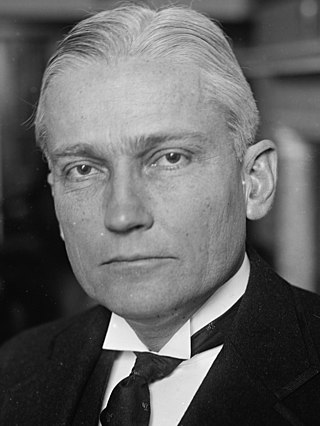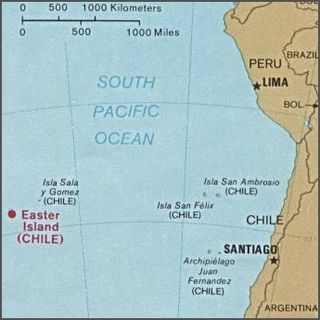Related Research Articles

A lost city is an urban settlement that fell into terminal decline and became extensively or completely uninhabited, with the consequence that the site's former significance was no longer known to the wider world. The locations of many lost cities have been forgotten, but some have been rediscovered and studied extensively by scientists. Recently abandoned cities or cities whose location was never in question might be referred to as ruins or ghost towns. Smaller settlements may be referred to as abandoned villages. The search for such lost cities by European explorers and adventurers in Africa, the Americas, and Southeast Asia from the 15th century onwards eventually led to the development of archaeology.

Thor Heyerdahl KStJ was a Norwegian adventurer and ethnographer with a background in biology with specialization in zoology, botany and geography.

Ellesmere Island is Canada's northernmost and third largest island, and the tenth largest in the world. It comprises an area of 196,236 km2 (75,767 sq mi), slightly smaller than Great Britain, and the total length of the island is 830 km (520 mi).

Cusco or Cuzco is a city in southeastern Peru near the Urubamba Valley of the Andes mountain range. It is the capital of the Cusco Region and of the Cusco Province. The city is the seventh most populous in Peru; in 2017, it had a population of 428,450. Its elevation is around 3,400 m (11,200 ft).

Machu Picchu is a 15th-century Inca citadel located in the Eastern Cordillera of southern Peru on a 2,430-meter (7,970 ft) mountain ridge. Often referred to as the "Lost City of the Incas", it is the most familiar icon of the Inca Empire. It is located in the Machupicchu District within Urubamba Province above the Sacred Valley, which is 80 kilometers (50 mi) northwest of Cusco. The Urubamba River flows past it, cutting through the Cordillera and creating a canyon with a tropical mountain climate. In reference to the site's name, for most English or Spanish speakers, the first 'c' in Picchu is silent. In English, the name is pronounced MAH-choo PEE-choo or MATCH-oo PEAK-choo, in Spanish as or, and in Quechua as.

Quipu are recording devices fashioned from strings historically used by a number of cultures in the region of Andean South America.

The Kon-Tiki expedition was a 1947 journey by raft across the Pacific Ocean from South America to the Polynesian islands, led by Norwegian explorer and writer Thor Heyerdahl. The raft was named Kon-Tiki after the Inca god Viracocha, for whom "Kon-Tiki" was said to be an old name. Heyerdal's book on the expedition was entitled The Kon-Tiki Expedition: By Raft Across the South Seas. A 1950 documentary film won the Academy Award for Best Documentary Feature. A 2012 dramatized feature film was nominated for the Academy Award for Best Foreign Language Film.

Cajamarca, also known by the Quechua name, Kashamarka, is the capital and largest city of the Cajamarca Region as well as an important cultural and commercial center in the northern Andes. It is located in the northern highlands of Peru at approximately 2,750 m (8,900 ft) above sea level in the valley of the Mashcon river. Cajamarca had an estimated population of about 226,031 inhabitants in 2015, making it the 13th largest city in Peru.

Hiram Bingham III was an American academic, explorer and politician. In 1911, he publicized the existence of the Inca citadel of Machu Picchu and rediscovered with the guidance of local indigenous farmers. Later, Bingham served as the 69th Governor of Connecticut for a single day in 1925—the shortest term in history. He had been elected in 1924 as governor, but was also elected to the Senate and chose that position. He served as a member of the United States Senate until 1933.

Vilcabamba or Willkapampa is often called the Lost City of the Incas. Vilcabamba means "sacred plain" in Quechua. The modern name for the Inca ruins of Vilcabamba is Espíritu Pampa. Vilcabamba is located in Echarate District of La Convención Province in the Cuzco Region of Peru.

The Chachapoyas, also called the "Warriors of the Clouds", was a culture of the Andes living in the cloud forests of the southern part of the Department of Amazonas of present-day Peru. The Inca Empire conquered their civilization shortly before the Spanish conquest in the 16th century. At the time of the arrival of the conquistadors, the Chachapoyas were one of the many nations ruled by the Incas, although their incorporation had been difficult due to their constant resistance to Inca troops.
Paititi is a legendary Inca lost city or utopian rich land. It allegedly lies east of the Andes, hidden somewhere within the remote rainforests of southeast Peru, northern Bolivia or northwest Brazil. The Paititi legend in Peru revolves around the story of the culture-hero Inkarri, who, after he had founded Q'ero and Cusco, retreated toward the jungles of Pantiacolla to live out the rest of his days in his refuge city of Paititi. Other versions of the legend see Paititi as an Inca refuge in the border area between Bolivia and Brazil.

Johan Reinhard is an American anthropologist and archaeologist. He is Explorer-in-Residence at the National Geographic Society. He is also a senior research fellow at The Mountain Institute, a visiting professor at Catholic University, Salta, Argentina, an honorary professor of Catholic University, Arequipa, Peru, and a research professor at Future Generations University.
Cape Farewell is an artist led organisation that works to create an urgent cultural response to climate change. Launched by David Buckland in 2001 with a series of ground-breaking artist and scientist manned expeditions to the Arctic, Cape Farewell has become an international not-for-profit programme based at the University of the Arts London: Chelsea.

Geologically one of the youngest inhabited territories on Earth, Easter Island, located in the mid-Pacific Ocean, was, for most of its history, one of the most isolated. Its inhabitants, the Rapa Nui, have endured famines, epidemics of disease, civil war, environmental collapse, slave raids, various colonial contacts, and have seen their population crash on more than one occasion. The ensuing cultural legacy has brought the island notoriety out of proportion to the number of its inhabitants.
The Petroglyphs of Pusharo constitute a unique and extensive ancient rock art archaeological site in southeastern Peru's Manú National Park, an expanse of rain forest that still contains unexplored and little known areas, and for which an official government permit is required for entry.
Man on Earth is a four-part British documentary television series presented by Tony Robinson. The programme documents the effects of climate change across 200,000 years of human history. The series premiered 7 December 2009 on Channel 4 with 1.4 million viewers. Accompanying Robinson to help explain the science are archaeologist Jago Cooper and climate modeller Joy Singarayer.

The Andean civilizations were South American complex societies of many indigenous people. They stretched down the spine of the Andes for 4,000 km (2,500 mi) from southern Colombia, to Ecuador and Peru, including the deserts of coastal Peru, to north Chile and northwest Argentina. Archaeologists believe that Andean civilizations first developed on the narrow coastal plain of the Pacific Ocean. The Caral or Norte Chico civilization of coastal Peru is the oldest known civilization in the Americas, dating back to 3500 BCE. Andean civilization is one of the six "pristine" civilizations of the world, created independently and without influence by other civilizations.

Chicha de jora is a corn beer or chicha prepared by germinating maize, extracting the malt sugars, boiling the wort, and fermenting it in large vessels for several days. The process is essentially similar to the process for the production of European-style beer. Some add quinoa or other adjuncts to give it consistency before it is boiled down. Chancaca, a hard raw form of cane sugar, helps with the fermentation process.

A tunjo is a small anthropomorh or zoomorph figure elaborated by the Muisca as part of their art. Tunjos were made of gold or tumbaga; a gold-silver-copper alloy. The Muisca used their tunjos in various instances in their religion and the small votive offering figures have been found in various places on the Altiplano Cundiboyacense, Colombia. Tunjos were used as offer pieces, to communicate with the gods and when the Muisca asked for favours from their deities. Muisca scholar Pedro Simón wrote about the tunjos of the Muisca.
References
- ↑ "Sainsbury Centre | About Us | Art Gallery & Museum | Norwich". Sainsbury Centre. Retrieved 26 April 2022.
- ↑ "Jago Cooper (H '95) presents The Lost Kingdoms of South America". Bryanston School. 14 January 2013. Archived from the original on 6 September 2014. Retrieved 26 January 2013.
- ↑ "University of Leicester work highlighted at prestigious international event". University of Leicester. 6 September 2014.
- ↑ "Jago Cooper". British Museum. 6 September 2014. Archived from the original on 7 September 2014. Retrieved 6 September 2014.
- ↑ "New discoveries of cave art in the Caribbean". British Museum. 6 September 2014.
- ↑ Guttmann-Bond, Erika (December 2012). "Lessons from the past: coping with natural hazards and climate change". Antiquity Journal, Vol. 86, Issue 334. doi:10.1017/S0003598X00048407. S2CID 163203745.
{{cite journal}}: Cite journal requires|journal=(help) - ↑ "Man on Earth". Channel 4. 6 September 2014.
- ↑ Cooper, Jago (Presenter); MacLaverty, John (Director and Producer); Downes, Mary (Series Producer) (14 January – 4 February 2013). Lost Kingdoms of South America. BBC. BBC Four.
- ↑ "Lost Kingdoms of Central America". BBC. 6 September 2014.
- ↑ "Easter Island: Mysteries of a Lost World". BBC. 6 September 2014.
- ↑ BBC 4. "The Inca: Masters of the Clouds". bbc.co.uk. Retrieved 8 February 2015.
{{cite web}}: CS1 maint: numeric names: authors list (link) - ↑ "Peru: a journey in time". The British Museum. Retrieved 26 April 2022.
- ↑ "Arctic Indigenous Peoples". Climate Change and Law Collection. doi:10.1163/9789004322714_cclc_2018-0125-006 . Retrieved 26 April 2022.
- ↑ "Where the Thunderbird lives". The British Museum. Retrieved 26 April 2022.
- ↑ "Arctic (British Museum)". thamesandhudson.com. Retrieved 26 April 2022.
- ↑ Sunnucks, Laura Osorio; Cooper, Jago (2021). Mapping a new museum: politics and practice of Latin American research with the British Museum. Routledge. ISBN 978-1-000-41251-2. OCLC 1295132886.
- ↑ Pardo, Cecilia; Cooper, Jago (November 2021). Peru: A Journey in Time. British Museum Press. ISBN 978-0-7141-2491-9.